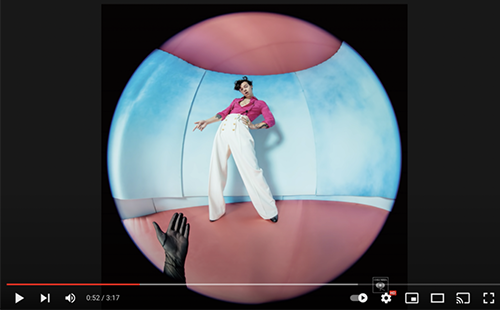Teach This Poem, though developed with a classroom in mind, can be easily adapted for remote learning, hybrid learning models, or in-person classes. Please see our suggestions for how to adapt this lesson for remote or blended learning. We have also noted suggestions when applicable and will continue to add to these suggestions online.
Listen to the song “Treat People with Kindness” by Harry Styles.
The following activities and questions are designed to help your students use their noticing skills to move through the poem and develop their thinking about its meaning with confidence, using what they’ve noticed as evidence for their interpretations. Read more about the framework upon which these activities are based.
-
Warm-up: (free-write) What associations do you have with the word kindness? How would you define it?
-
Before Reading the Poem: Listen to the song “Treat People with Kindness” by Harry Styles. What did you notice in the song? What does this make you think?
-
Reading the Poem: Read the poem “Kindness” by Naomi Shihab Nye silently. What do you notice about the poem? Annotate for any words or phrases that stand out to you or any questions you might have.
-
Listening to the Poem: (enlist two volunteers to read the poem aloud): Listen as the poem is read aloud twice, and write down any additional words and phrases that stand out to you. Or, you may opt to watch this animated video of the poem after reading.
-
Small-group Discussion: Share what you noticed in the poem with a small group of students. Based on the details you just shared with your small group and the resource from the beginning of class, what does kindness mean to the speaker? How does that compare to the song from the beginning of class? What does kindness mean to you?
-
Whole-class Discussion: What is the connection between kindness and sorrow? Do you agree or disagree with these lines from the poem “Before you know kindness as the deepest thing inside, / you must know sorrow as the other deepest thing?” How does the poet personify kindness? (Teachers, if you haven’t already, this might be a good time to introduce personification.)
-
Extension for Grades 7-8: Join with a partner or a small group. Together, choose to turn the poem “Kindness” into an illustrated book or create and illustrate your own book inspired by the poem.
- Extension for Grades 9-12: Read “On Joy and Sorrow” by Kahlil Gabran. After, choose to write your own poem or write a personal essay on your thoughts about joy/kindness and sorrow.
“And I do think that sometimes one of the most precious elements of affinity and inspiration is gathering up poems so that you’ll be able to put your fingers on them later to hand to someone at the appropriate moment, to give to the friend who needs it right then, to e-mail to the person who’s hurting.” Watch or read Naomi Shihab Nye’s discussion titled "Poetic Affinities & Inspiration.
Personification is the endowment of inanimate objects or abstract concepts with animate or living qualities. Read more.

